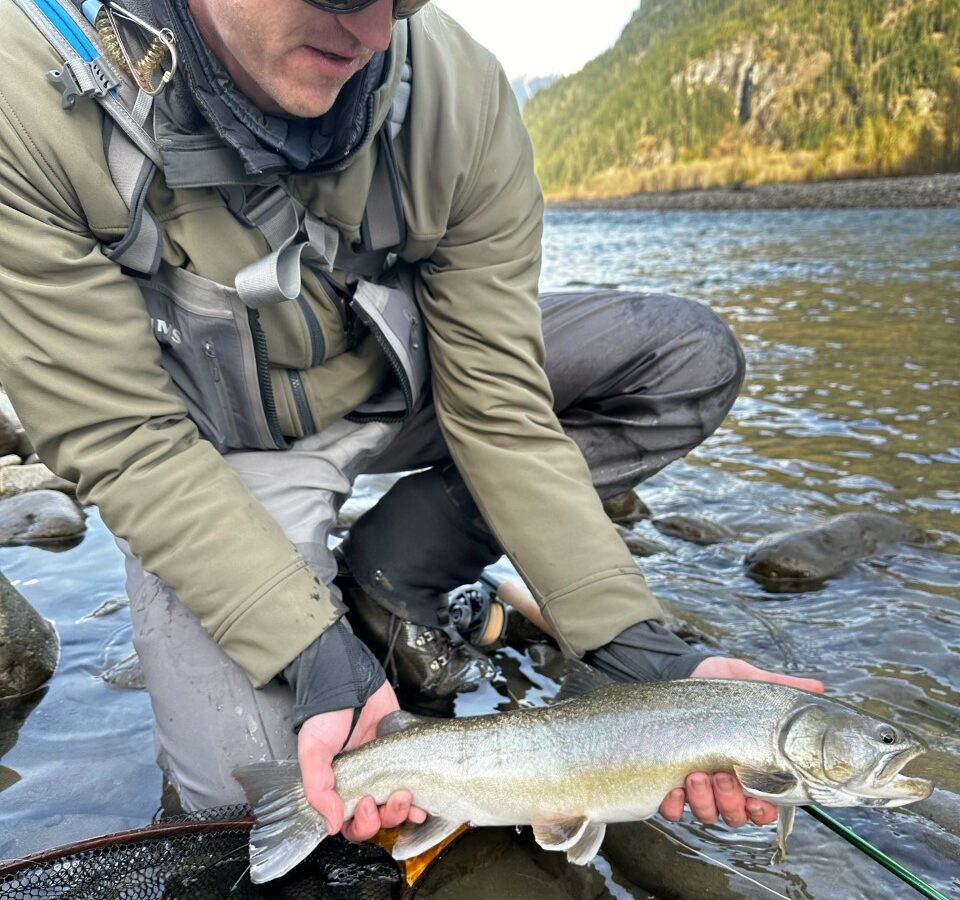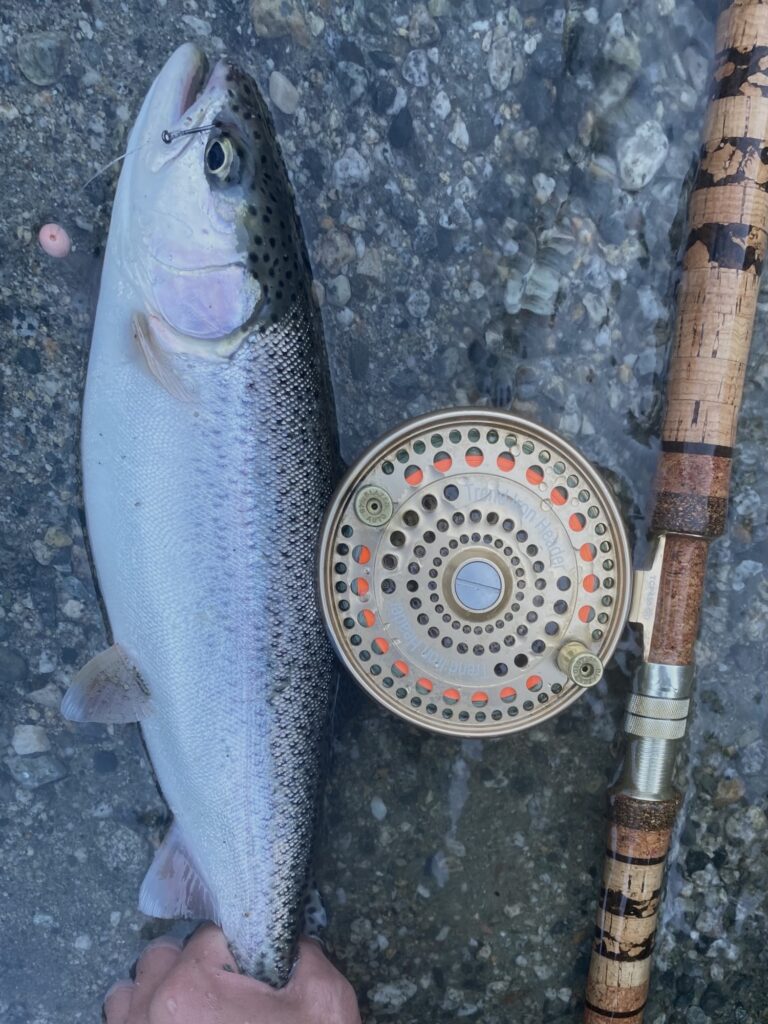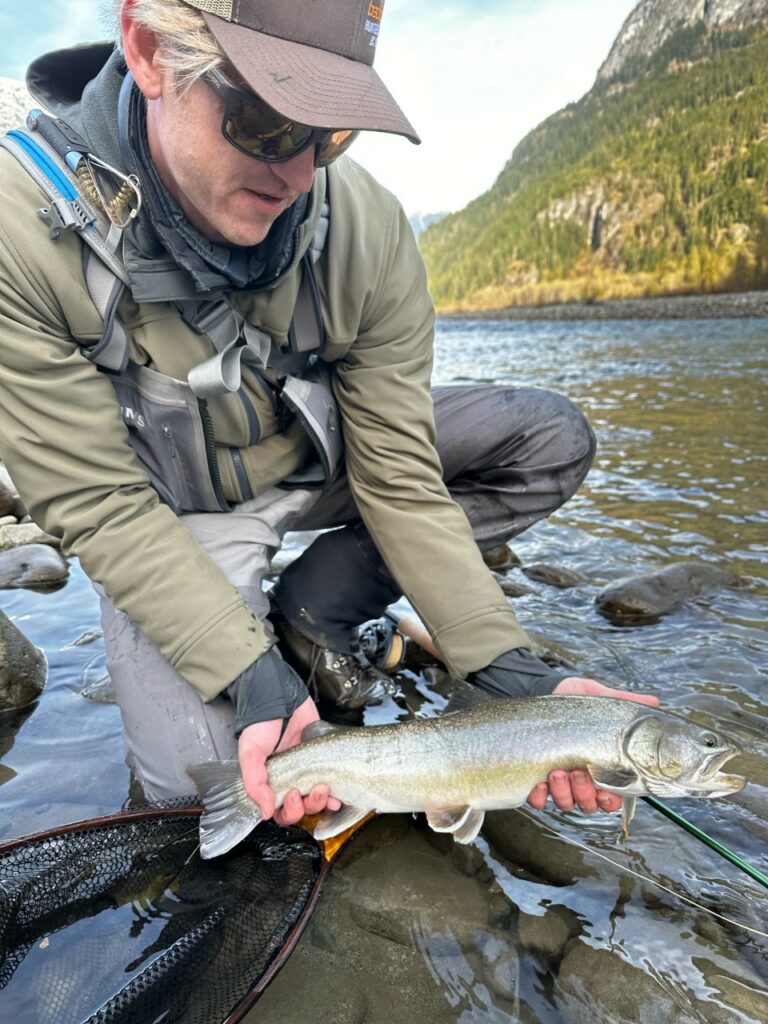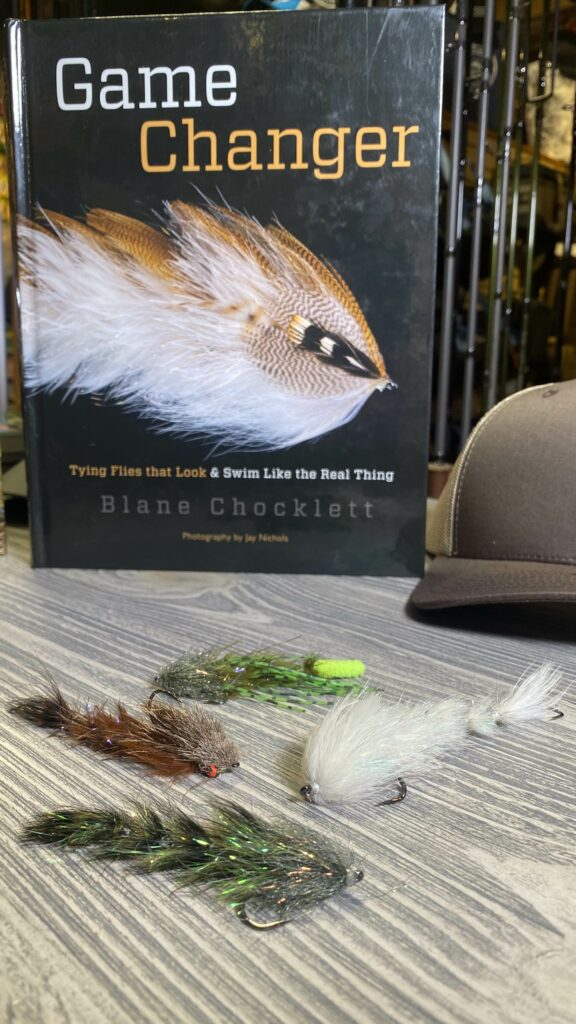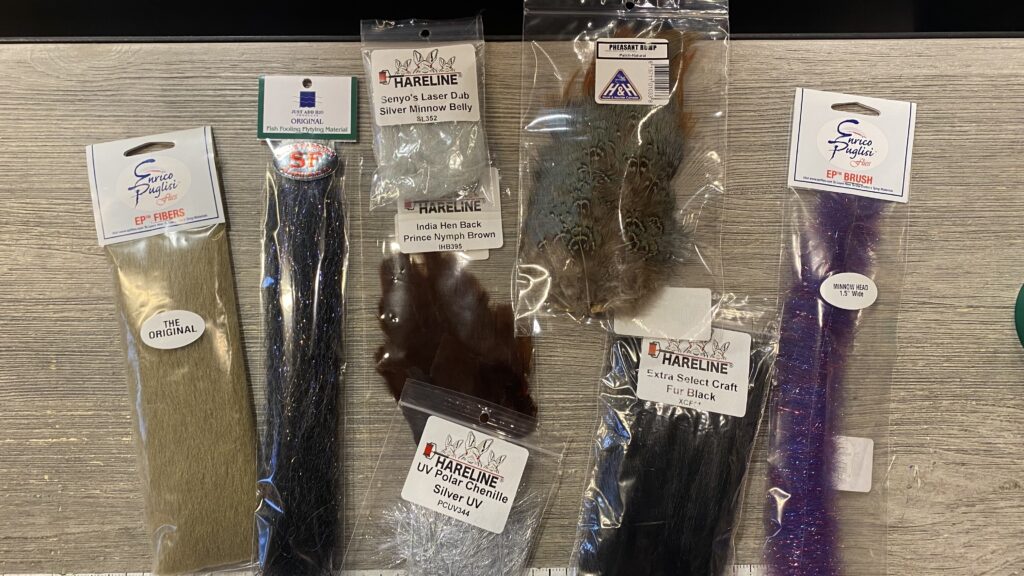OUTLOOK
This week we are seeing many of the salmon fisheries wind down but, surprisingly, there are still good reports coming in. If you want one last kick at the can, be sure to take a look at this week’s Freshwater Fishing Reports section where we have updates on the Chilliwack and north side systems. We also have a Squamish report this week where we are seeing low clear conditions but, some solid fishing in the less than ideal water conditions. With some rain in the forecast, it might be a good weekend to hunt for egg eaters.
Last, but not least, we have a cool feature on game changer style patterns. Wiley has been playing around with them and has a learned a thing or two that we thought might be useful if you want to tackle this complicated but very productive pattern.
On to the report
FRESHWATER FISHING REPORTS
Chilliwack/Vedder Fishing Report
All good things come to an end and, eventually, this year’s fall salmon season will too. The challenges thrown at us this year were low water, summer-like weather and picky fish as a result. The anglers who were willing to adapt and innovate creative solutions to overcome obstacles were successful, others were not. While at times frustrating, tough conditions create better anglers and even though conditions were a little challenging overall, the number of fish in the Chilliwack system was healthy.
Typically, we see the season start to wind down around this week for fresh coho and chum. This year, it seems like it is still holding on for an extra while. As we transition from fall salmon season into the winter, there are some opportunities available for those who are looking for solitude on the river. Starting now through January, resident and transient trout in the Chilliwack/Vedder take advantage of the smorgasbord of salmon eggs and flesh drifting down after spawning. This is a very important food source for rainbows, cutthroat, dollies, bulltrout and whitefish who rely on this food source to sustain them for the cold winter.
Fishing beads, worms and deli shrimp are usual the go-tos for this fishery. Float fishing or nymphing beads are the most common and typically the most effective ways to target these salmonids while we patiently wait for steelhead. You can use an ultralight spinning setup or your typical salmon float fishing setup will work too. We will go over setups and techniques in more detail in the following weeks.
Cheers,
Gavin Lau
North Side Salmon Fishing Report
Salmon season is finally winding down in most of the north side rivers, with a majority of this year’s chum and coho having already spawned. There will still be opportunities to encounter fresh fish well into December, but these opportunities will be limited. Having said that, now seems like a good time to take a brief look back at how things went on the north side.
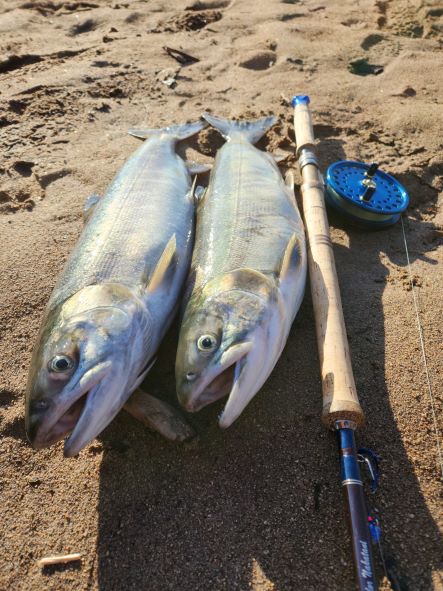
Salmon returns were fairly good across the board, with the coho, chum and chinook all doing fairly well, with a few exceptions. This year’s biggest issue wasn’t a lack of fish; it was a lack of water. The extended dry season we experienced wreaked havoc on both anglers and fish. Low, clear water made fishing exceptionally challenging for ethical anglers, while the fish themselves struggled to cope with the abysmally low flows. They couldn’t move freely, they were easy pickings for unethical anglers and predators, and many fish that arrived earlier in the season ended up spawning in sub-optimal areas. Fish were forced to spawn in the lower reaches of several systems, much farther downstream than they normally spawn; many fish simply spawned in the thalweg. This presents several issues, with the most notable being that eggs are much more likely to be washed out and destroyed during high-water events if they are buried in the deepest, fastest sections of the river. The direct result of this forced thalweg spawning remains to be seen; hopefully we don’t see any major blowouts this fall/winter.
The chinook returns in the systems that support them were quite significant due to a dramatic increase in hatchery chinook production three years ago… with the exception of the Harrison, which has been having issues with its once-famous chinook return for several years. Hatchery production was so significant that noticeable numbers of chinook got lost and ended up in systems that have never historically supported them before, such as the Stave. It’ll be interesting to see if future populations of chinook develop in these systems over the coming years due to this phenomenon.
The coho did quite well this year, as expected. Most coho populations in the north side systems are heavily supplemented by hatchery production, so I don’t think it’s possible to have a “poor” coho return in these systems. Having said that, there were plenty of fish to go around, with the “average size” of this year’s fish seeming to be slightly larger than last year. Low water made fishing quite challenging, but plenty of fish still managed to make it to their spawning grounds which shows that the return was fairly sizeable. Similar to the chinook, a lot of thalweg spawning occurred.
Chum returns were much better than last year… that doesn’t say much, but it’s an improvement, which is good. I would not consider this year to have been exceptionally good for chum; I can remember much more significant runs in years past, but it was clearly good enough for some retention opportunities.
Overall, this year’s salmon returns were quite good, but very poor river conditions will likely have an impact on how successful this year’s spawn was. The good news is that there is a lot of hatchery production of coho, chum and chinook in several north side systems, so it’s unlikely that those enhanced populations will suffer from the conditions. Ethical anglers struggled in the low, clear water almost as much as the fish did, but most anglers still found reasonable amounts of success. I wasn’t especially fond of this year’s conditions, but I still managed to do alright on the north side, and I hope you all had some success as well.
There are still plenty of fishing opportunities available… there are still some late-run coho and chum around that will be worth looking for, and there will also be good numbers of cutthroat trout, rainbow trout and even a few bulltrout travelling behind the spawning salmon looking for eggs and flesh to feast on. Alternatively, you can take a break, rest up and stock up on gear for the coming steelhead season. Higher ocean survival rates were made evident by this year’s salmon returns, so I’m hopeful for the coming steelhead season… we’ll have to wait and see how things shape up!
Taylor Nakatani
Squamish River Fishing Report
It’s going to get cold! Even with the cold the weekend should present some good fishing opportunities.
For the past half dozen years, we have worried about too much water this time of year. Constant late Fall storms blew out the fishing conditions and more importantly blew out the chum and coho spawning habitat. The result was poor bulltrout fishing over the winter months and one can only point to these high water events when we see lower salmon returns in subsequent seasons.
This season we are seeing the opposite problem. Lower water levels are making it hard for salmon to access smaller spawning habitats. All is not doom and gloom though – there are a healthy number of chum and coho in the system right now and I am seeing chum in areas we have not seen them in the past handful of “poor” years. This is great news for the future of the salmon run and the winter egg fishing. Now we just need to get good river conditions to see great fishing.
We were hoping for those “good” river conditions this weekend. It looks like we will see “better” conditions but maybe not perfect conditions. Some water did come and the river rose but things are still quite low and clear. With the small bump of water, we heard better reports. With a little more rain in the forecast I expect there to be good egg fishing this weekend and well worth getting out but we don’t think it will last much past the weekend.
If you are heading out, bring along the nymphing rig or float rod. Rig a salmon bead and cover ground. Find where the salmon are spawning and fish down river of them. One note: Treat the spawning habitat with the utmost respect. Every red counts, so avoid walking through areas where salmon are spawning and even if you do not see spawning salmon try to avoid walking down the middle of small gravel side channels.
When we look to next week, we see things get cold and this will drop the river levels again and slow the fishing. Long story short, get out this weekend if you can and then wait until this cold spell passes and we see some warmer wet weather in the forecast.
Good luck,
Matt Sharp
SPECIAL FEATURE
Gamechanger Crash Course
Tying season is upon us, and I thought I would share some insights into a rabbit hole I’ve gone down in the past year. Gamechangers are a relatively new style of streamer that include several articulations to create an erratic, lifelike action. Generally, they are not as hard to tie as they look, but it can be a confusing cycle of trial and error before you get the profile and swimming action dialed.
Hooks:
Any short shank, wide gap hook will work. Selecting the right hook for the length of fly you want to tie is not immediately obvious so when in doubt, ask for help from one of the guys at the shop and we’ll point you in the right direction. Most of my gamechangers are tied with Owner No Escapes because they are what I had available, but a straight-eye hook definitely makes for a better-looking fly. A size 1/0 No Escape or Cutting Point is perfect for 4” baitfish, a size 1 for 3.5”, and a size 2 for 3” but you could get away with a size 1 for all three.
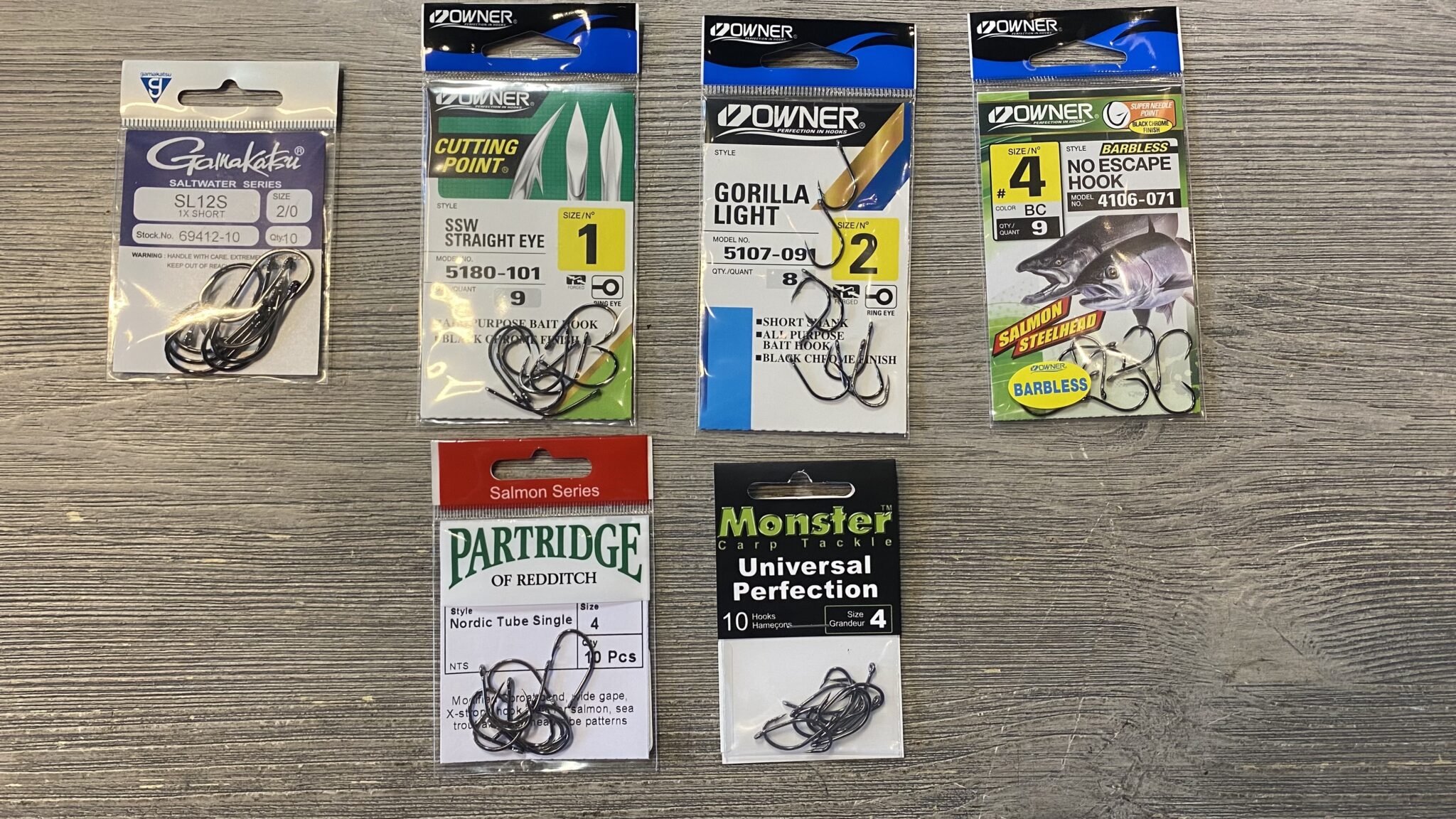
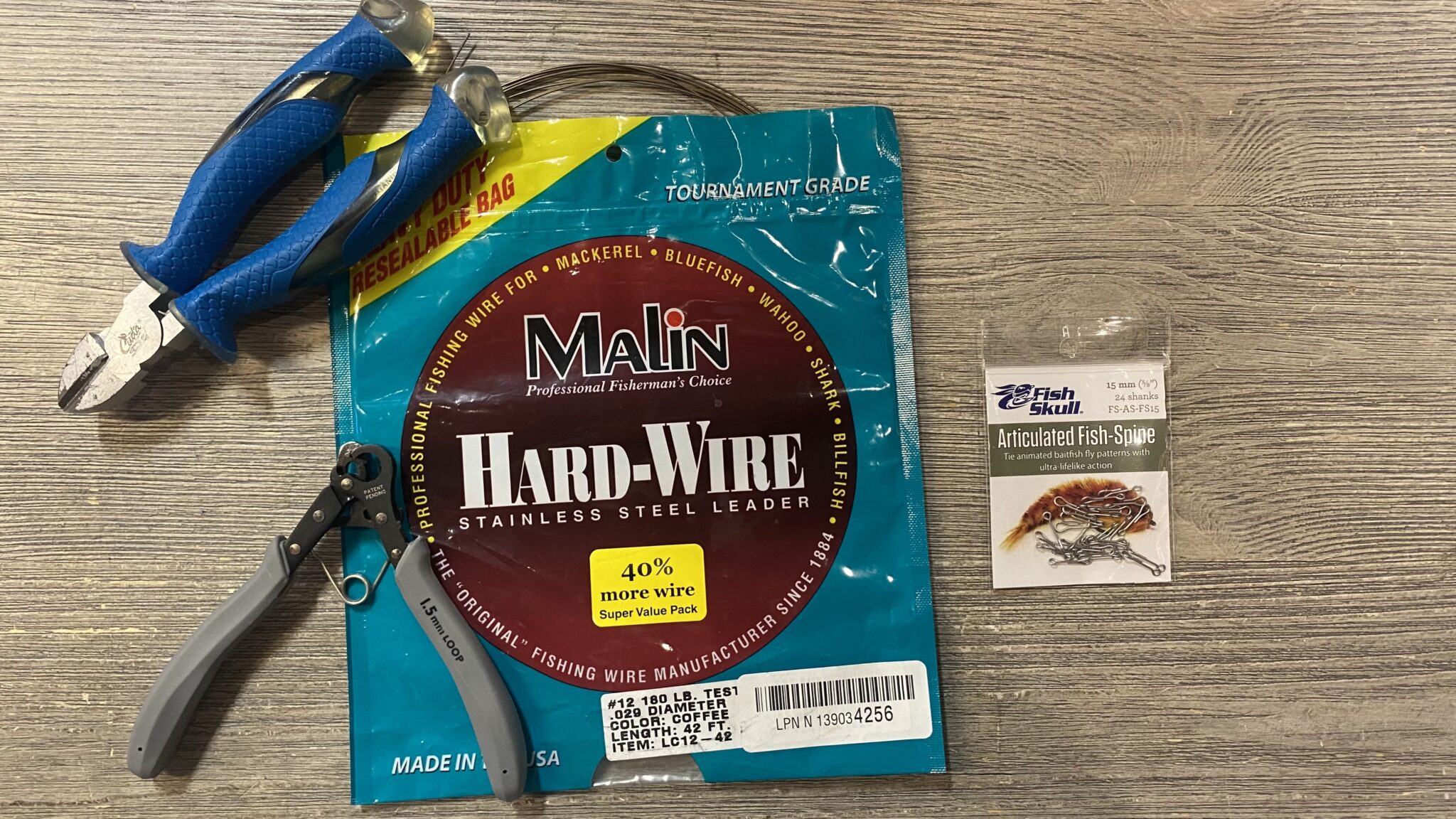
Shanks:
We carry Flymen’s gamechanger shanks which are by far the easiest choice for shanks. You only really need three sizes, 6mm, 10mm and 15mm if you are tying flies under 5 inches. Below is an example configuration for a ~3.5” fly:
6mm -> 10mm -> 10mm -> 10mm -> 15mm -> Sz 1 No Escape
Personally, I bend my own shanks out of 180lb test Malin hard wire. This allows me to create any length of shank and saves money. The downside being that the gaps between shanks are a bit larger and therefore it’s harder to create seamless transitions down the fly. I doubt the fish care.
Weight:
Just like any other streamer, there are a bunch of ways you can add weight. Where and how you add weight affects the way the fly swims. Dumbbell eyes, a heavy cone, or a fish-scull mask will make the fly jig up and down and will take away from the side-to-side swimming motion. If that’s not what you want, you can try hiding lead wraps on the hook shank or tie in beads “belly scratcher” style. A weightless fly paired with a heavy sink tip moves the best in my opinion.
Tail:
This is the component I have experimented with the least. I normally use a pinch of short marabou fibers or the fluff from the bottom of schlappen feathers. For a 3.5” fly try to keep the tail around 3/4”. I occasionally will use mop tails and spinner blades and I’ve seen dozens of other variations so experiment to find what you like best!
Body:
The body of the fly is normally made of two components, a prop and a wing. The two are repeated on every shank and the hook. The prop builds the base of the profile and fills in gaps while the wing lays overtop, adds movement to the fly, and finishes that seamless baitfish profile. For reasons I will get into in the next section, you want just enough bulk to create your profile but no more. Starting at the tail, the prop, and wing increase in length until you get to the head. Good prop materials include flash chenilles such as Polar and Palmer Chenille trimmed to length on each shank and stiff fibers such as EP fibers, SF blend, or Krystal Flash spun in a dubbing loop. Limp fibers such as flashabou do not work well.
For wings, my go-to is hen hackle. We carry a bunch of colors of Indian hen backs which are perfect for ~4” gamechangers and smaller. The feathers are smallest at the bottom and increase in size as you move up. This makes building a perfect taper easy. Indian capes are not super high quality, so you need to tie in 2-4 at a time. This allows you to create a really cool mottled look if you use, for example, 2 brown feathers and one olive. Fancier hen capes are available for special order and give you the ability to tie longer flies and use fewer feathers. Other wing materials I’ve used include arctic fox, pheasant rump, craft fur, laser dub, and rabbit.
Head:
The head is what gives the fly its movement. The idea is to have a bulky head that pushes a lot of water. When you strip, the fly moves in line with the leader until you stop. The bulky head stops the fly as soon as you stop stripping, as opposed to a more streamlined pattern that will continue on. As the fly stops, the less bulky shanks will want to keep moving and kick out to the side. The resulting movement looks exactly like a frantic, injured baitfish. The greater the disparity in water push between the head and body, the more exaggerated the side-to-side movement. Without a bulky head, the fly will still have a very lifelike swim but will lack the bite-triggering thrashes of an injured fish.
My favorite material for heads is the 1.5” EP Minnow Head brush. A few wraps and you have a perfect head. Other materials you could use to get an exaggerated movement include other brushes, stiff synthetic fibers in a dubbing loop, or spun deer hair. Materials that will give you more subtle movement include crosscut rabbit, stacked wool, and stacked or spun dubbing.
Wiley Melton


